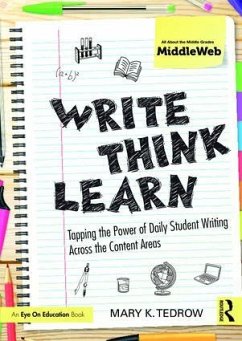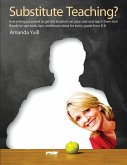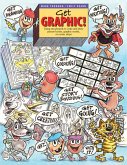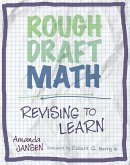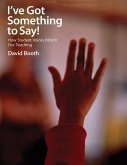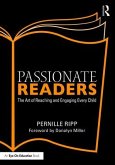- Broschiertes Buch
- Merkliste
- Auf die Merkliste
- Bewerten Bewerten
- Teilen
- Produkt teilen
- Produkterinnerung
- Produkterinnerung
Find out how to create the climate and space for everyday student writing.
Andere Kunden interessierten sich auch für
![The First-Year English Teacher's Guidebook The First-Year English Teacher's Guidebook]() Sean RudayThe First-Year English Teacher's Guidebook124,99 €
Sean RudayThe First-Year English Teacher's Guidebook124,99 €![Substitute Teaching? Substitute Teaching?]() Amanda YuillSubstitute Teaching?29,99 €
Amanda YuillSubstitute Teaching?29,99 €![Get Graphic! Get Graphic!]() Mark ThurmanGet Graphic!29,99 €
Mark ThurmanGet Graphic!29,99 €![Teaching Women's and Gender Studies Teaching Women's and Gender Studies]() Kathryn Fishman-WeaverTeaching Women's and Gender Studies174,99 €
Kathryn Fishman-WeaverTeaching Women's and Gender Studies174,99 €![Rough Draft Math Rough Draft Math]() Amanda JansenRough Draft Math41,99 €
Amanda JansenRough Draft Math41,99 €![I've Got Something to Say I've Got Something to Say]() David BoothI've Got Something to Say29,99 €
David BoothI've Got Something to Say29,99 €![Passionate Readers Passionate Readers]() Pernille RippPassionate Readers41,99 €
Pernille RippPassionate Readers41,99 €-
-
-
Find out how to create the climate and space for everyday student writing.
Hinweis: Dieser Artikel kann nur an eine deutsche Lieferadresse ausgeliefert werden.
Hinweis: Dieser Artikel kann nur an eine deutsche Lieferadresse ausgeliefert werden.
Produktdetails
- Produktdetails
- Verlag: Taylor & Francis
- Seitenzahl: 184
- Erscheinungstermin: 22. August 2017
- Englisch
- Abmessung: 244mm x 175mm x 13mm
- Gewicht: 340g
- ISBN-13: 9781138052772
- ISBN-10: 1138052779
- Artikelnr.: 49085036
- Verlag: Taylor & Francis
- Seitenzahl: 184
- Erscheinungstermin: 22. August 2017
- Englisch
- Abmessung: 244mm x 175mm x 13mm
- Gewicht: 340g
- ISBN-13: 9781138052772
- ISBN-10: 1138052779
- Artikelnr.: 49085036
Mary K. Tedrow is a National Board Certified Teacher of English Language Arts/Adolescence and Young Adulthood with twenty-six years of classroom experience. She directs the Shenandoah Valley Writing Project housed at Shenandoah University.
Meet the Author Acknowledgements Preface: How to read this book. Chapter One: Why add writing? Moving Toward a community of authentic learners Exemplifying authentic learning
Ensuring student success
Understanding the struggle
Employing a Daybook Chapter Two: Where to begin? Motivating students to accept the daily writing challenge. Introducing, formatting, and managing the notebook
Motivating students
Developing routines Chapter Three: What will we write about? Understanding characteristics of effective prompting. Defining the teacher's role
Reviewing theory
Examining questions
Anticipating answers
Categorizing prompting Chapter Four: Where have we been? Where are we going? Prompting Reflection and goal setting with an emphasis on inquiry. Understanding reflection
Determining when to use reflection and goal setting
Activating reflection
Tying reflection to specific assignments Chapter Five: Wait. What? You want my opinion? Helping students locate their own thinking. Highlighting existing student skills
Using expressive writing to locate thought
Engaging in thinking activities Chapter Six: How does writing support course objectives? Teaching the curriculum through writing. Shifting away from teacher talk
Managing time
Deepening learning with writing
Understanding concepts with writing Chapter Seven: Why are these essays so hard to read? Scaffolding student products by collecting and brainstorming before assigning. Assigning versus supporting writing
Exploring and collecting ideas
Breaking through writing blocks
Identifying gaps in research and argument Chapter Eight: What about grading? Assessing daily writing for growth that makes the invisible visible. Reviewing grading and motivation
Creating a low-risk environment
Assessing in the moment
Letting students evaluate
Assessing learning through written products Afterword Works Cited Appendix A - Additional sources for prompting Appendix B - Assignments that support reflecting and goal setting Appendix C - Additional handouts
Ensuring student success
Understanding the struggle
Employing a Daybook Chapter Two: Where to begin? Motivating students to accept the daily writing challenge. Introducing, formatting, and managing the notebook
Motivating students
Developing routines Chapter Three: What will we write about? Understanding characteristics of effective prompting. Defining the teacher's role
Reviewing theory
Examining questions
Anticipating answers
Categorizing prompting Chapter Four: Where have we been? Where are we going? Prompting Reflection and goal setting with an emphasis on inquiry. Understanding reflection
Determining when to use reflection and goal setting
Activating reflection
Tying reflection to specific assignments Chapter Five: Wait. What? You want my opinion? Helping students locate their own thinking. Highlighting existing student skills
Using expressive writing to locate thought
Engaging in thinking activities Chapter Six: How does writing support course objectives? Teaching the curriculum through writing. Shifting away from teacher talk
Managing time
Deepening learning with writing
Understanding concepts with writing Chapter Seven: Why are these essays so hard to read? Scaffolding student products by collecting and brainstorming before assigning. Assigning versus supporting writing
Exploring and collecting ideas
Breaking through writing blocks
Identifying gaps in research and argument Chapter Eight: What about grading? Assessing daily writing for growth that makes the invisible visible. Reviewing grading and motivation
Creating a low-risk environment
Assessing in the moment
Letting students evaluate
Assessing learning through written products Afterword Works Cited Appendix A - Additional sources for prompting Appendix B - Assignments that support reflecting and goal setting Appendix C - Additional handouts
Meet the Author Acknowledgements Preface: How to read this book. Chapter One: Why add writing? Moving Toward a community of authentic learners Exemplifying authentic learning
Ensuring student success
Understanding the struggle
Employing a Daybook Chapter Two: Where to begin? Motivating students to accept the daily writing challenge. Introducing, formatting, and managing the notebook
Motivating students
Developing routines Chapter Three: What will we write about? Understanding characteristics of effective prompting. Defining the teacher's role
Reviewing theory
Examining questions
Anticipating answers
Categorizing prompting Chapter Four: Where have we been? Where are we going? Prompting Reflection and goal setting with an emphasis on inquiry. Understanding reflection
Determining when to use reflection and goal setting
Activating reflection
Tying reflection to specific assignments Chapter Five: Wait. What? You want my opinion? Helping students locate their own thinking. Highlighting existing student skills
Using expressive writing to locate thought
Engaging in thinking activities Chapter Six: How does writing support course objectives? Teaching the curriculum through writing. Shifting away from teacher talk
Managing time
Deepening learning with writing
Understanding concepts with writing Chapter Seven: Why are these essays so hard to read? Scaffolding student products by collecting and brainstorming before assigning. Assigning versus supporting writing
Exploring and collecting ideas
Breaking through writing blocks
Identifying gaps in research and argument Chapter Eight: What about grading? Assessing daily writing for growth that makes the invisible visible. Reviewing grading and motivation
Creating a low-risk environment
Assessing in the moment
Letting students evaluate
Assessing learning through written products Afterword Works Cited Appendix A - Additional sources for prompting Appendix B - Assignments that support reflecting and goal setting Appendix C - Additional handouts
Ensuring student success
Understanding the struggle
Employing a Daybook Chapter Two: Where to begin? Motivating students to accept the daily writing challenge. Introducing, formatting, and managing the notebook
Motivating students
Developing routines Chapter Three: What will we write about? Understanding characteristics of effective prompting. Defining the teacher's role
Reviewing theory
Examining questions
Anticipating answers
Categorizing prompting Chapter Four: Where have we been? Where are we going? Prompting Reflection and goal setting with an emphasis on inquiry. Understanding reflection
Determining when to use reflection and goal setting
Activating reflection
Tying reflection to specific assignments Chapter Five: Wait. What? You want my opinion? Helping students locate their own thinking. Highlighting existing student skills
Using expressive writing to locate thought
Engaging in thinking activities Chapter Six: How does writing support course objectives? Teaching the curriculum through writing. Shifting away from teacher talk
Managing time
Deepening learning with writing
Understanding concepts with writing Chapter Seven: Why are these essays so hard to read? Scaffolding student products by collecting and brainstorming before assigning. Assigning versus supporting writing
Exploring and collecting ideas
Breaking through writing blocks
Identifying gaps in research and argument Chapter Eight: What about grading? Assessing daily writing for growth that makes the invisible visible. Reviewing grading and motivation
Creating a low-risk environment
Assessing in the moment
Letting students evaluate
Assessing learning through written products Afterword Works Cited Appendix A - Additional sources for prompting Appendix B - Assignments that support reflecting and goal setting Appendix C - Additional handouts
